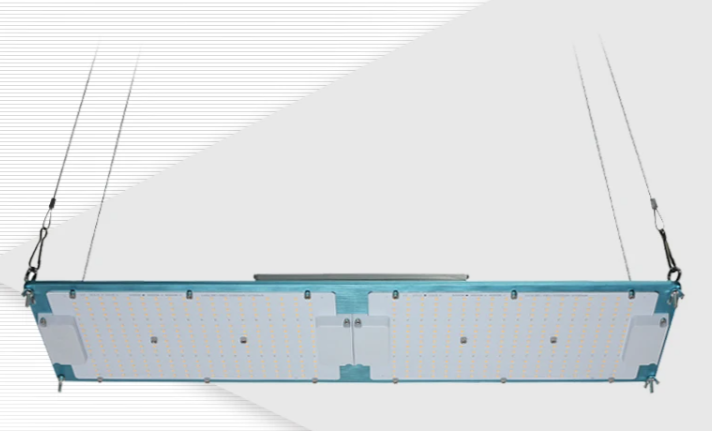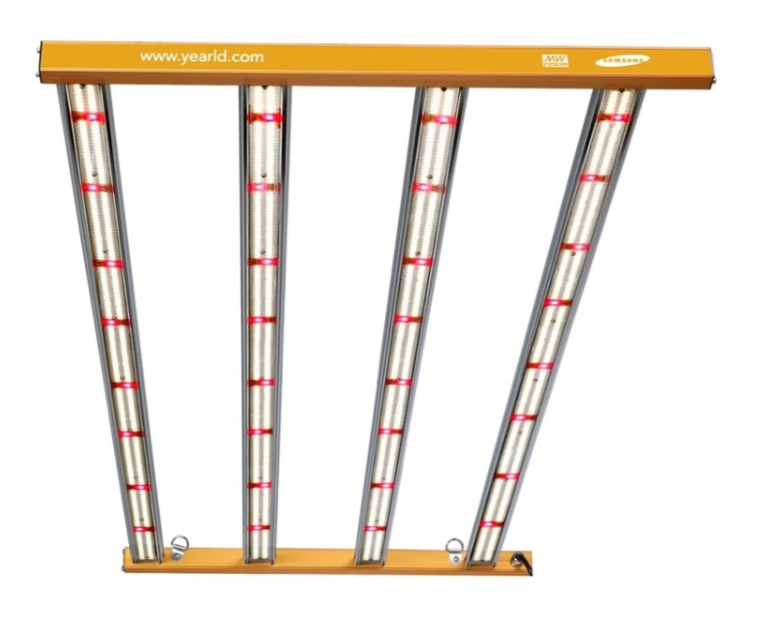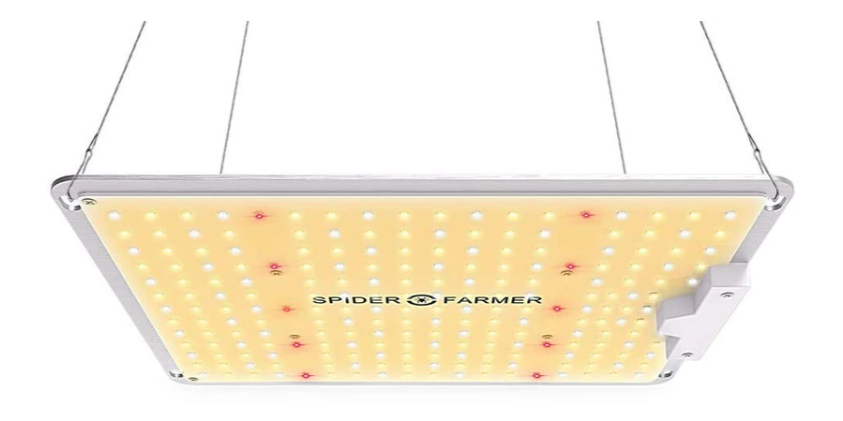If you are looking to get a new grow light, you should really consider LED lights since they are much more energy efficient. That is good for your pocket book as well as the environment. The problem is that selecting the right type of light is no trivial matter.
WHAT IS A COLOR SPECTRUM?
A color spectrum is a graphical display of each of the colors in the light.
Scientists use wavelength numbers to refer to the colors instead of color names, which is a much more accurate way to measure the color. So a red might have a wavelength of 630 or 660. Both of these look red to us, but they are actually different colors.
Grow lights that use florescent bulbs, refer to the color of the bulb as cool white (has more blue), or warm white (has more red). That was useful for florescent lights, but such designations do not work well for LED lights. When it comes to LED it is more accurate to talk in terms of wavelengths and to display the actual color spectrum.
Full spectrum LED grow light provides plants in all stages from veg to flower with everything they need in the natural sunlight.
WHICH COLORS DO PLANTS USE?
Almost no light is absorbed in the green range.
This has led to the incorrect conclusion that plants only need blue and red light.
DIFFERENT COLORS DO DIFFERENT THINGS
- Red Light (630 -660 nm) is essential for the growth of stems, as well as the expansion of leaves. This wavelength also regulates flowering, dormancy periods, and seed germination.
- Blue Light (400 -520 nm) needs to be carefully mixed with light in other spectra since overexposure to light in this wavelength may stunt the growth of certain plant species. Light in the blue range also affects the chlorophyll content present in the plant as well as leaf thickness.
- Green Light (500 – 600 nm) penetrates through thick top canopies to support the leaves in the lower canopy.
- Far Red Light (720 – 740 nm) also passes through dense upper canopies to support the growth of leaves located lower on the plants. In addition, exposure to IR light reduces the time a plant needs to flower. Another benefit of far red light is that plants exposed to this wavelength tend to produce larger leaves than those not exposed to light in this spectrum.
BEST COLOR SPECTRUM DEPENDS ON YOUR GOALS
The best color spectrum also depends on the type of plant you are trying to grow.
This can get very complicated and is really only important for commercial growers where they want to maximize results.
As a general rule, plants do best with light of all wavelengths, but they don’t need equal amounts of each.
HOW DO YOU MAKE WHITE LIGHT WITH LED?
One solution for providing white light is to combine different colored bulbs into one fixture. Basic units combine blue and red. More advanced units will include yellow and green bulbs. Since a typical fixture contains many bulbs, it can be customized to produce different amounts of each color. Mix enough different colored bulbs and you have white light.
Another way to make white light is to coat the bulb lens with a phosphor compound. Such bulbs usually use a blue light which hits the phosphor and it produces white light. This is similar to the way florescent bulbs work.
White LED bulbs would seem to be the best alternative but there is a catch. Whenever light is converted to other colors, some of the intensity is lost during the conversion. This means white bulbs produce less light than equivalent LED bulbs without the phosphor coating. White bulbs are also more expensive. Even with these limitations, they are becoming a popular option for grow lights.
BEST COLOR SPECTRUM GROW LIGHT FOR PLANTS
ECO FARM ECO BLUE 120/240W LM301H QUANTUM BOARD
Excellent full spectrum- 3000K/3500K diodes providing more reddish light. The 660nm red light is especially useful during bloom, where it speeds up flowering time and boost yields. Turn your seeds into your own supply. And the light looks fairly natural, so it's good for accurately monitoring plant health.
YEARLD PRO 330W LED GROW LIGHT
2.6 μmol/j Reliable passive-cooled design no cooling fans required. ECO Farm LED grow light covers you all stage growing needs and it’s the best add on for high yields.
SPIDER FARMER SF 1000 LED GROW LIGHT
The light spectrum provides exactly what your plants need depending on their grow stage. You will see the true colors of your plants. SF -1000 will lead your plant in an optimum way during all stages, by just adjusting the height and lighting schedule: germination, seeding, veg and bloom.
FINAL THOUGHTS-THE BEST COLOR SPECTRUM FOR LED GROW LIGHTS
Don’t worry about matching the sun or white light.
I think it is important to see the output spectra of a light before you buy, but most manufacturers don’t show these. The new proposed labels for LED grow lights, will show PPFD (called PFD) for various ranges of wavelengths, including the PAR range.
Comparing PPFD values is the next best thing. A higher PPFD will provide more light for plant growth.


























